IS HAIR LOSS OR ALOPECIA STRESSING YOU OUT?
Published On 10-08-2022 | By Dharani Senthilkumar
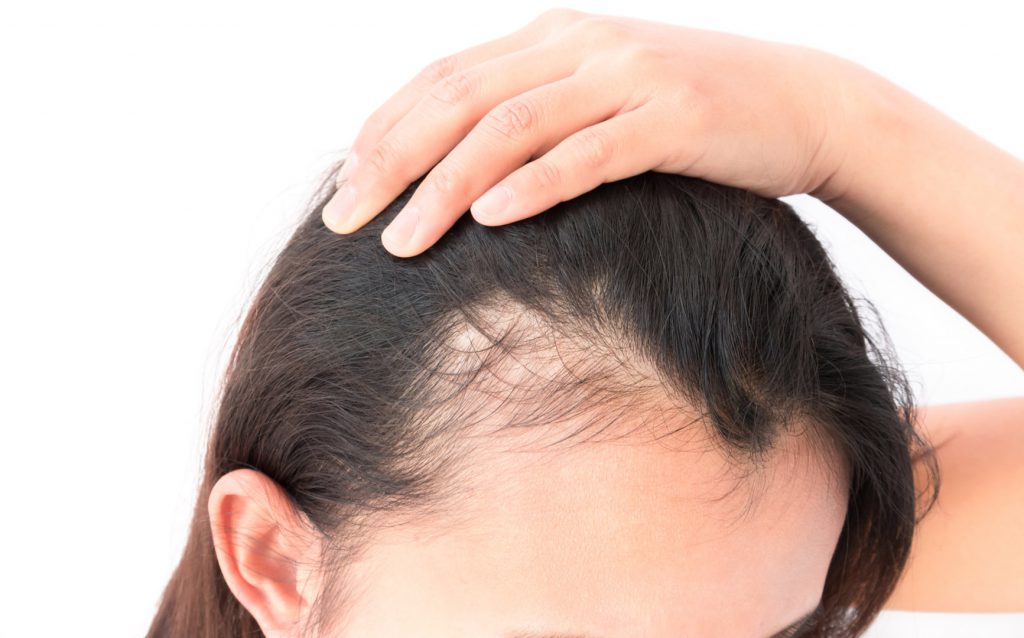
WHAT IS HAIR LOSS (ALOPECIA)?
Hair loss (Alopecia) can trigger your senses in a way you would have never expected. Losing all your hair suddenly for which even a proper reason is not identifiable can undeniably worsen any person.
Our body mistakes the hair follicles for a foreign body and attacks them, thereby damaging the follicles. And resists hair growth.
This body response to follicles can cause patchy or complete hair loss.
The fact is that Alopecia can attack any person, from children to adults.
Though losing hair necessarily does not have to be a condition of Alopecia, it is advisable to check up with a doctor. In addition, losing hair can be an indicator of any other disease in the body.
There are a lot of types. And the most common types include,
ALOPECIA AREATA
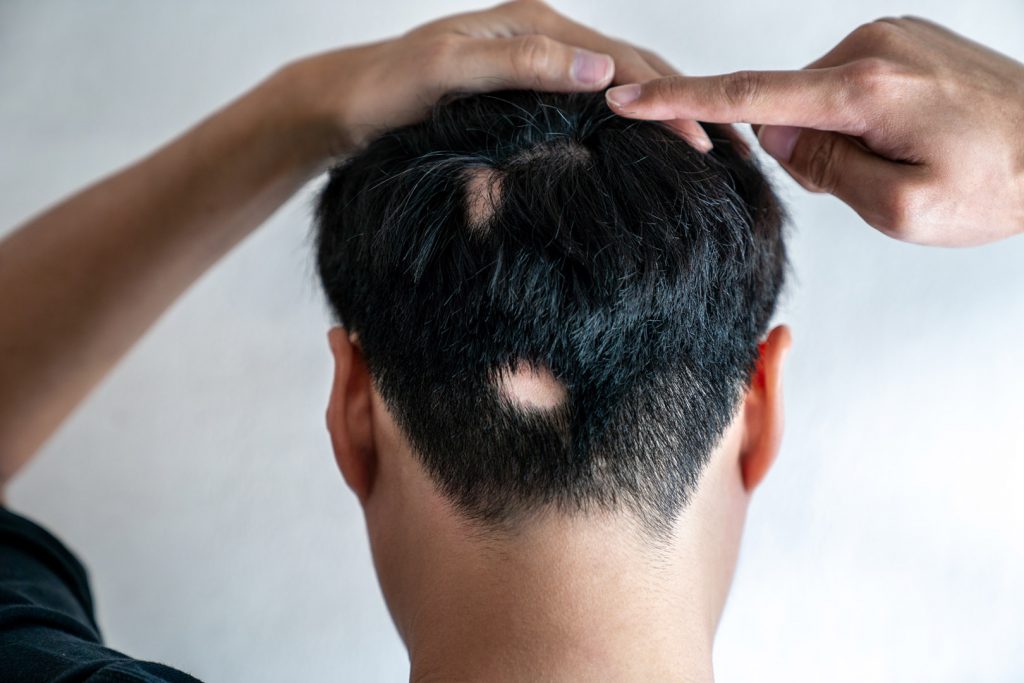
The term Alopecia is a combination of Greek (Alopex) and Latin (Areata) words. Foxes have been witnessed with a condition of fur loss due to certain kind of invasion by mites. A similar kind of hair loss is seen in humans. We tend to lose hair as coin-sized patches or even broader and worse with complete baldness.
Alopecia is not just occurs only on the head. Generally, it is associated with hair loss on the scalp. But people also witness hair loss in facial areas or even the entire body.
This could be temporary or permanent.
Alopecia areata could be genetic and, in some cases, be due to non-genetic reasons.
Some people with alopecia areata face discolouration and pitting in the nails. In addition, the nails may appear rough and whitish in colour. The infection in nails can usually be treated with proper medical applications.
Hair loss and regrowth often come in unpredictable cycles. Alopecia Areata not only affects the scalp area. But also appears as patchy loss in the beard, eyebrows, armpits, and other body parts.
ALOPECIA TOTALIS
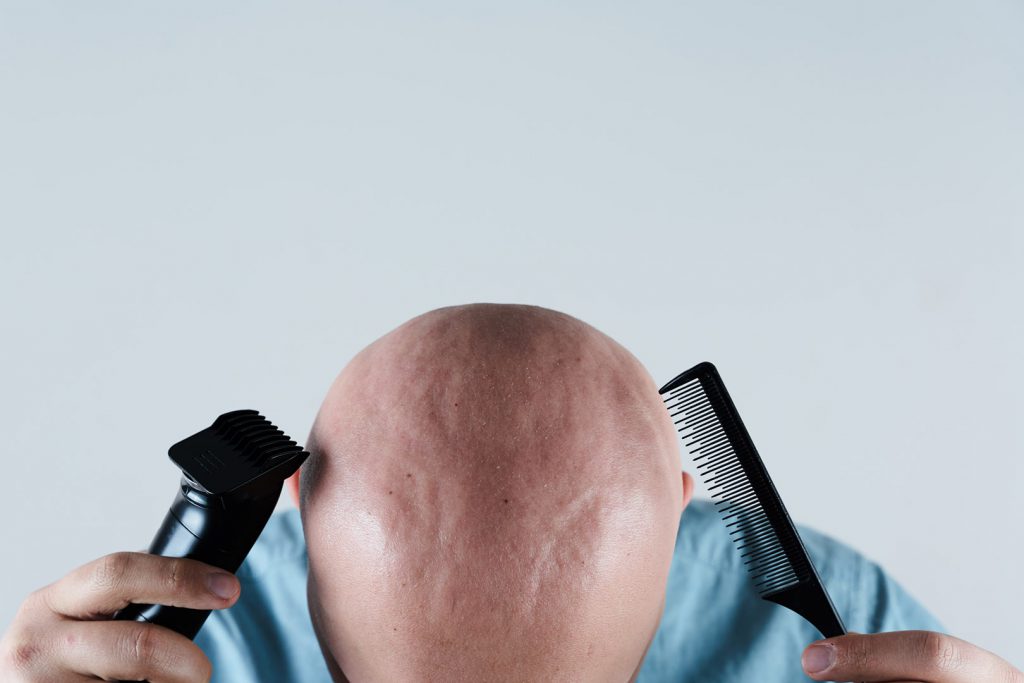
This is a condition of entire hair loss in the scalp or other parts of the body.
Apart from the scalp, one can lose hair in body parts. This condition is the progression of Alopecia Areata, and it is pretty hard to get back to a normal state.
Since these are autoimmune disorders, hair regrowth depends upon the body’s response to treatments.
ALOPECIA UNIVERSALIS
Alopecia Universalis is the most severe form of Alopecia. People with Alopecia Universalis will face hair loss on the scalp and the overall body.
Though treatment options are available for this condition, the results depend upon the individual’s responsiveness to the treatment. For example, some may gain their hair back, whereas some will respond negatively.
ANDROGENETIC ALOPECIA
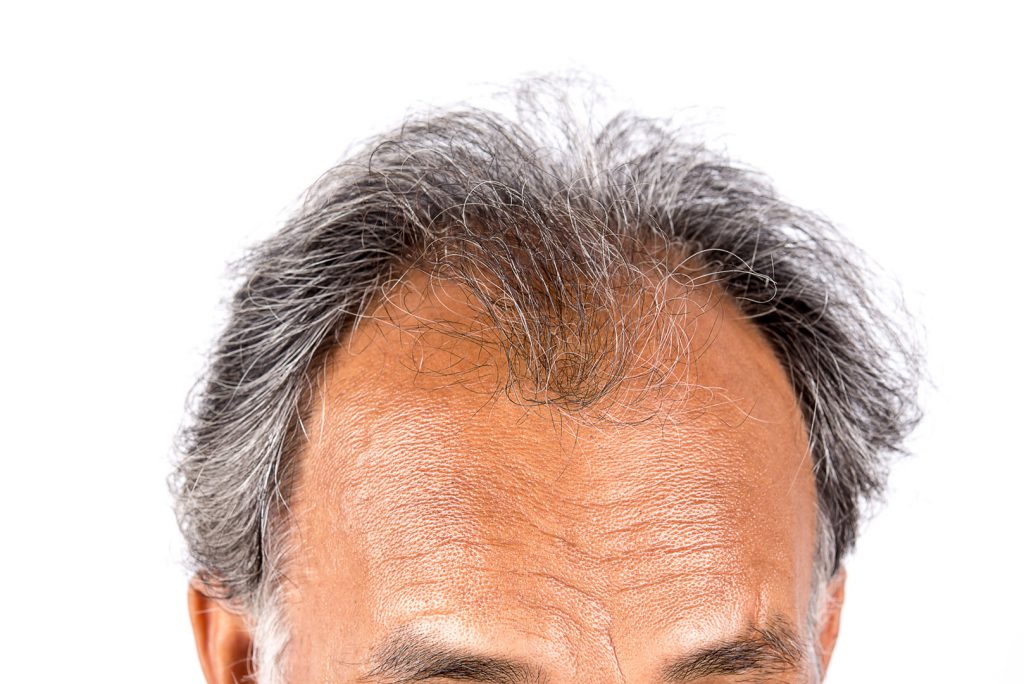
Androgenetic Alopecia affects both men and women. This is the common type of Alopecia that affects half of the population.
This type of hair loss is usually male pattern baldness in men and female pattern thinning in women. But the thinning differs from men to women. Men start losing their hair in the crown area, front of the scalp, and usually appear as “M-Shaped” heads.
Whereas women face hair thinning, which rarely leads to complete baldness. Generally, the scalp becomes more visible from the part line and widens over time.
Again, AGA could be due to genetic reasons and lifestyle practices. However, the presence of excess DHT hormone is the culprit that causes AGA.
TRACTION ALOPECIA
Traction alopecia occurs due to too much pressure on the hair strands. Practising tight hairstyles, high-bun, or tight rubber bands that will pull the hair strands for a long time can also result in hair loss.
This hair loss is usually treatable by adjusting the hairstyle and relieving the hair strands from too much pulling.
Following unhealthy practices like forcing excess heat to dry out wet hair or combing wet hair can also be some of the reasons for traction alopecia.
DIFFUSE ALOPECIA
Diffuse Alopecia is a condition due to sudden hormonal fluctuations or other unidentifiable reasons. Unlike patchy hair loss, a person with diffuse Alopecia may experience hair loss in clumps or hair thinning.
ALOPECIA BARBAE
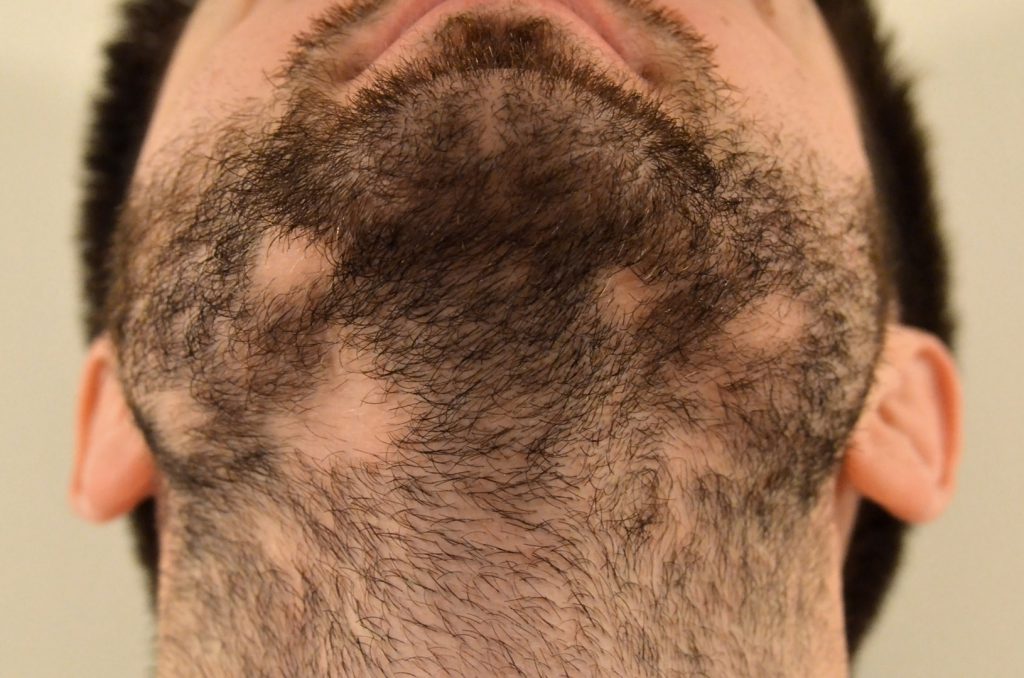
A person with Alopecia Barbae starts losing hair in the beard region. Unlike Alopecia areata or Universalis, alopecia barbae is patchy hair loss in the beard area. This is an autoimmune disease and requires medical attention.
POSTPARTUM ALOPECIA
Women during their post-pregnancy period may face a lot of hair falling out from their heads due to rapid hormonal imbalance. This is periodic but seeking medical attention may help prevent severe hair loss.
These are some of the common types of Alopecia faced by men and women. However, with proper attention from a medical professional, the cause of this condition can be identified earlier without prolonging it to the worse.
Get to know the various treatment options available at our clinics for Alopecia and witness a positive change gradually.
